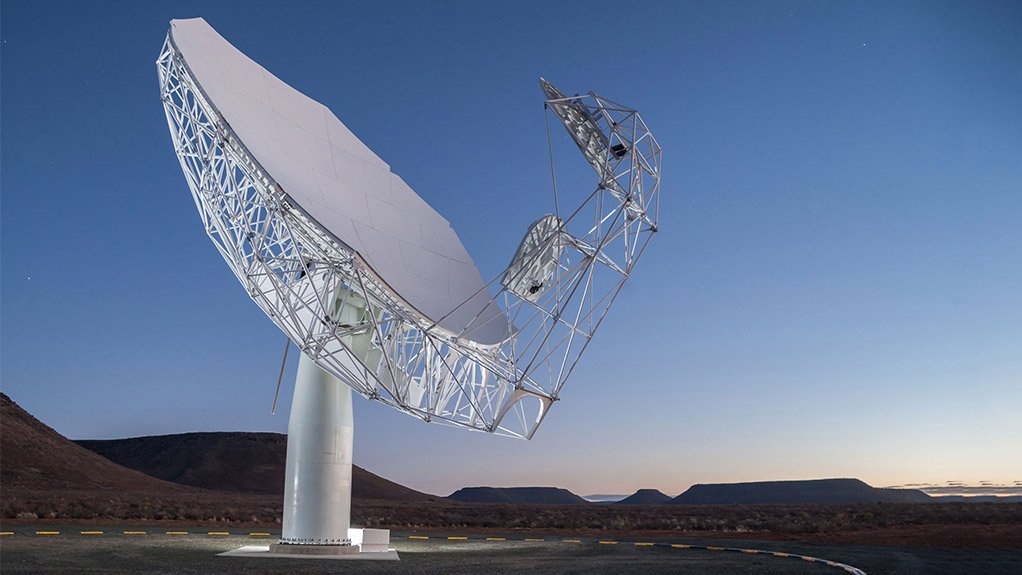The development of the 64-dish MeerKAT array radio telescope is a strategic infrastructure project and forms part of efforts to transform the South African economy, specifically through the development of human capital, Deputy President Cyril Ramaphosa said on Saturday.
The MeerKAT would eventually be incorporated into the larger 2 500-dish Square Kilometre Array (SKA).
Speaking at a function to mark the start of accelerated construction of the remaining 63 MeerKAT dishes before December 2016, Ramaphosa stated that innovation, value addition, industrialisation and entrepreneurship would be given a boost, while the project highlighted the vital role that science and technology must play in developing the nation and enabling equitable growth.
“Throughout human history, technological progress has fuelled economic and social developments, created industries and improved our way of life. In agriculture, commerce, healthcare, communication, manufacturing and education, technology has transformed the human experience and the way we live.
“In this respect, the SKA project is a product and an enabler of technological progress, which also lays the foundation for future advances in science and technology for our country and our continent, which will be used as a springboard for further developmental progress on the continent,” he added.
He urged South Africa to expand and develop its human capital to become more creative, more innovative and more technologically advanced.
The MeerKAT project had seen 678 bursaries granted to young people studying towards bachelor degrees, PhD and MSc courses, as well as artisanal and technical vocational education and training courses. About 50 of these bursaries were for MSc and PhD courses.
“These bursaries and fellowships are affording young people the opportunity to leapfrog knowledge and education barriers that they face to produce a new cohort of young scientists.
“These scientists will be the products of a society that values knowledge, a society that promotes learning and rewards innovation and produces young people who are thirsty for knowledge.”
Integral to science and engineering was collaboration, as science knew no borders and knowledge was not the sole preserve of individual nations. Thus, cooperation and collaboration were required to expand on knowledge and apply what was discovered to improve lives, said Ramaphosa.
The SKA project, and the initial MeerKAT project, have already delivered significant improvement to the lives of people in the local Kareeberg municipality, specifically in the towns of Williston and Carnarvon, said outgoing SKA South Africa project director Dr Bernie Fanaroff.
“The development of infrastructure for the project uses as much local labour as possible, but some local contractors are not able to take advantage of the work. To this end, we have established 18-month training courses for local contractors to help with construction, as well as long-term maintenance work. We are targeting 75% local content by value,” he pointed out.
“In this project, the development of human capital is the most important impact. The first and second phases of the SKA, which will follow on from the MeerKAT’s first scientific use mid-2017, represent a huge industrial project and we want to get contractors to help with this, not only on the infrastructure, but also on the high-technology parts of the construction schedule,” he added.
Further, the eight partner countries in Africa are converting second-hand satellite dishes for use in astronomy and are using these to improve engineering knowledge, as well as to start a big data programme. The dishes and training programmes were aimed at teaching young people in these countries about astrophysics, big data analytics and data processing.
“Data processing is a lucrative and obvious spin-off of the SKA project on the continent and we want Africa to develop the necessary capacity in this data processing field to support the project and win a portion of an industry that will be worth more than $1-trillion over the next few decades,” said Fanaroff.
The second MeerKAT dish (pedestal 62) was under construction and was named after Fanaroff in his honour. The first dish (pedestal 63) had already been completed.
In line with the accelerated construction, about three dishes a month would have to be built from April onwards. About 70% of the dishes would be within a 1 km radius of each other, while the furthest would be 8 km away from the centre.
EMAIL THIS ARTICLE SAVE THIS ARTICLE
To subscribe email subscriptions@creamermedia.co.za or click here
To advertise email advertising@creamermedia.co.za or click here











